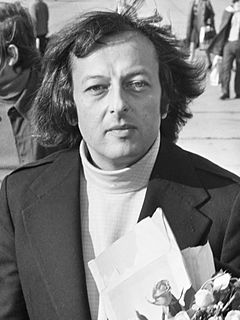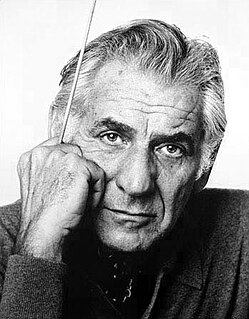The Grammy Award for Best Instrumental Soloist(s) Performance was awarded from 1959 to 2011. From 1967 to 1971 and in 1987 the award was combined with the award for Best Instrumental Soloist Performance and awarded as the Grammy Award for Best Classical Performance - Instrumental Soloist or Soloists.
Richard Danielpour is an American composer.
Daniel Müller-Schott is a German cellist.
Richard "Dick" Waller is an American clarinetist, visual artist and founder/former artistic director of the Linton Chamber Music Series in Cincinnati, Ohio.

Louis Langrée is a French conductor. He is the son of organist and theorist Alain Langrée. One of his sisters is an amateur cellist.
Fabian Müller is a Swiss composer.
A double concerto refers to two distinct variations on the concerto. Most often, it refers to a concerto featuring two performers, as opposed to the usual single performer, in the solo role. These two performers' instruments may be of the same type, as in Bach's, Concerto for Two Violins, or different, as in Brahms's Concerto for Violin, Cello and Orchestra.
The Kalichstein–Laredo–Robinson Trio is an American piano trio consisting of violinist Jaime Laredo, cellist Sharon Robinson, and pianist Joseph Kalichstein. The trio is one of the longest-lasting chamber ensembles with all of its original members, having debuted in 1977 at the inauguration of president Jimmy Carter. In 2001 it was named by Musical America as Ensemble of the Year, and in 2011 it was awarded the Samuel Sanders Collaborative Artists Award from The Classical Recording Foundation. In the 2003-2004 season, The John F. Kennedy Center for the Performing Arts appointed Kalichstein–Laredo–Robinson Ensemble in Residence. The trio is widely regarded as perhaps the most seminal piano trio performing today, and are noted for the high quality of their interpretations of the trio repertoire.

The Concerto Grosso No. 1 was the first of six concerti grossi by Soviet composer Alfred Schnittke. It was written in 1976–1977 at the request of Gidon Kremer and Tatiana Grindenko who were also the violin soloists at its premiere on 21 March 1977 in Leningrad together with Yuri Smirnov on keyboard instruments and the Leningrad Chamber Orchestra under Eri Klas. It is one of the best-known of Schnittke’s polystilistic compositions and marked his break-through in the West.
Heimdall's Trumpet is a concerto for trumpet and orchestra by the American composer Christopher Rouse. It was commissioned by the Chicago Symphony Orchestra for its principal trumpeter Christopher Martin. The piece was completed January 21, 2012 and premiered December 20, 2012 at Symphony Center in Chicago.
The Double Concerto for Violin and Cello is a double concerto for violin, cello, and orchestra by the American composer John Harbison. The work was commissioned by the Friends of Dresden Music Foundation for the Boston Symphony Orchestra under the conductor James Levine. It was given its world premiere on April 8, 2010 by the spousal team of the violinist Mira Wang and the cellist Jan Vogler and the Boston Symphony Orchestra under the direction of Carlos Kalmar. The piece was composed in honor of the violinist Roman Totenberg.
The Double Concerto is a composition for violin, cello, and orchestra by the American composer Ned Rorem. The work was commissioned by the Indianapolis Symphony Orchestra and composed between July 27, 1997 and April 1998. It was composed for the violinist Jaime Laredo and the cellist Sharon Robinson, who first performed the piece with the Indianapolis Symphony Orchestra conducted by Raymond Leppard in Indianapolis on October 15, 1998.
The Concerto for Cello and Orchestra is a cello concerto by György Ligeti written in 1966. It is dedicated to cellist Siegfried Palm, who gave the concerto its premiere performance.

The Concerto for Violin and Orchestra "Anne-Sophie" is a violin concerto by André Previn. It was composed in 2001 by request of the Boston Symphony Orchestra for Anne-Sophie Mutter. Previn conducted the first performance in March 2002 in Boston. The same performers recorded the work in 2003, and received a Grammy Award for it in 2005.









